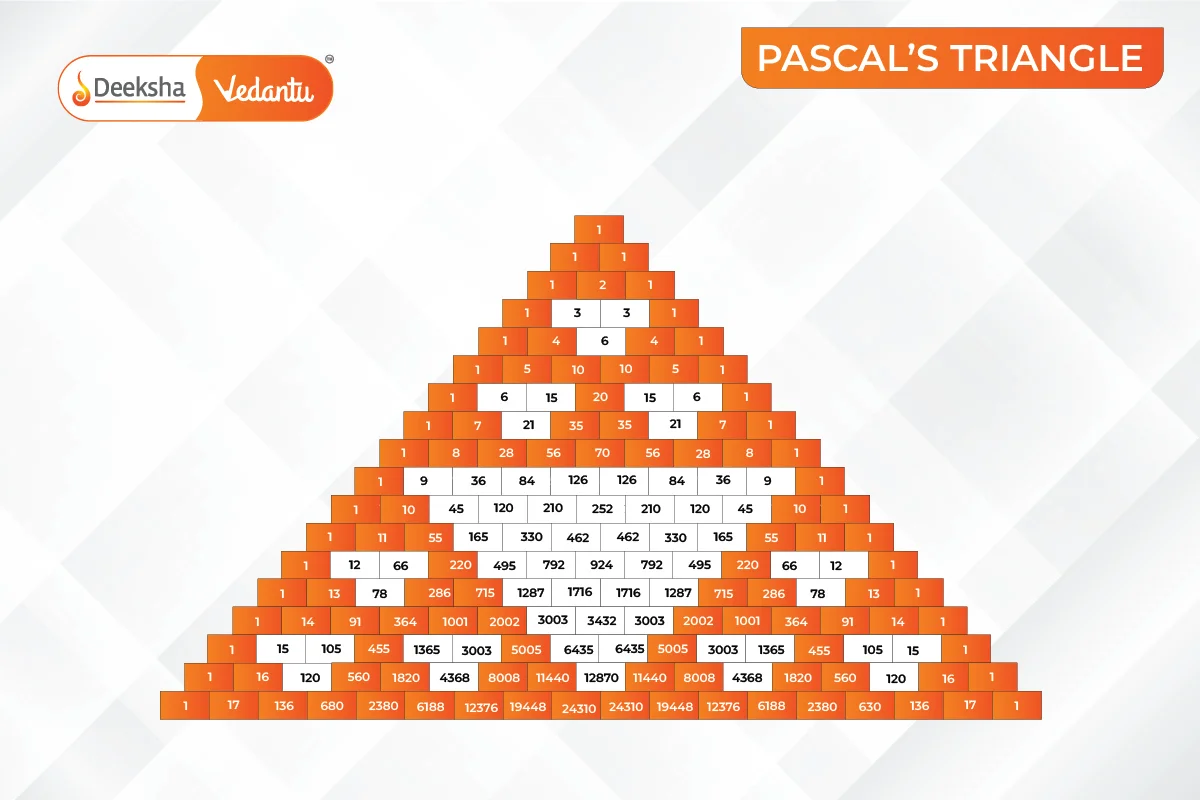What is the Binomial Theorem?
The Binomial Theorem is a classical mathematical principle that enables the expansion of powers in algebraic expressions that consist of two terms – known as binomials – into a series. This theorem is invaluable when dealing with powers that are too large to feasibly expand manually. It simplifies the process of calculating the polynomial expansion of expressions like , where
and
are any numbers, and n is a positive integer.
Binomial Expression: A binomial expression includes two unlike terms, such as or
, often involving variables and constants.
Key Points in Binomial Expansion
- Number of Terms: The expansion of
consists of
terms.
- Exponent Sum: The sum of the exponents in each term of the expansion is always equal to n.
- Binomial Coefficients: The coefficients
are crucial in the expansion and are symmetrically equal from the start and end (i.e.,
).
Binomial Expansion Formulas and Examples

For any positive integer and real numbers
and
, the expansion is given by:
where represents the binomial coefficient, calculated as
.
Example Calculations:
Example 1: Expand .
Solution: Using the binomial theorem:
Example 2: Calculate .
Solution:
Properties of Binomial Coefficients
Binomial coefficients, which appear in the expansion, have several interesting and useful properties:
- The sum of the coefficients:
.
- Alternating sum:
.
- Relationship in powers and coefficient ratios: Useful in deriving further mathematical properties and solving higher-level problems.
Practical Applications of the Binomial Theorem
The theorem is not just a theoretical mathematical tool but has practical applications in fields like:
- Probability: Calculating probabilities in scenarios involving multiple outcomes.
- Algebraic Calculations: Simplifying and solving algebraic equations.
- Computational Mathematics: Enhancing computational techniques for expanding polynomials.
- Physics and Engineering: Used in quantum physics calculations and in solving engineering problems where power series expansion is necessary.
FAQs
Pascal’s Triangle is a geometric representation of the binomial coefficients used in the theorem, where each number is the sum of the two directly above it.
Yes, the theorem can be extended to work with any real or complex exponent by using the concept of infinite series for convergence within specific bounds.
For the even value of , the middle term is the
th term. If
is odd, the middle terms are the
th term and
![Rendered by QuickLaTeX.com \displaystyle \boldsymbol{\left[\left(\frac{n+1}{2}\right) + 1\right]}](https://deekshalearning.com/wp-content/ql-cache/quicklatex.com-5fcf241138d0d5c3c081615c0a73771a_l3.png)
They determine the weights of individual terms in the expansion, reflecting combinations in which components can occur.
Related Topics
- Basic Logic Gates
- JEE Main Syllabus 2025
- Transformer
- Correlation Coefficient
- Raoult’s Law
- Redox Reactions
- JEE Advanced Marks vs Ranks 2024
- Rank of a Matrix and Some Special Matrices
- Normality
- Coulomb’s Law
- JEE Main Marks vs Rank 2024
- Electromagnetic Spectrum
- Heisenberg Uncertainty Principle
- Semiconductors
- Young’s Double Slit Experiment











Get Social